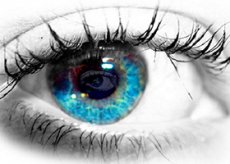
All iLive content is medically reviewed or fact checked to ensure as much factual accuracy as possible.
We have strict sourcing guidelines and only link to reputable media sites, academic research institutions and, whenever possible, medically peer reviewed studies. Note that the numbers in parentheses ([1], [2], etc.) are clickable links to these studies.
If you feel that any of our content is inaccurate, out-of-date, or otherwise questionable, please select it and press Ctrl + Enter.
Scanning laser polarimetry
Medical expert of the article
Last reviewed: 04.07.2025

When is scanning laser polarimetry used?
Scanning laser polarimetry is used to detect glaucoma and monitor its progression.
How does scanning laser polarimetry work?
The advantage of GDx (Laser Diagnostic Technologies, San Diego, CA) is the interaction of polarized light with birefringent tissue, which makes it possible to measure the thickness of the anterior segment. This method is based on the principle of the occurrence of changes in polarized light during birefringence of the anterior segment, known as retardation. This retardation is linearly dependent on the thickness and optical properties of the anterior segment. Polarized light from a diode source in the near infrared range of 780 nm is focused on a single point of the retina. Polarized light penetrates the anterior segment and is partially reflected back from its deep layers. The polarization state of the reflected light is analyzed using digital technology. A stationary compensating device neutralizes the average birefringence of the anterior segment. Data on the slowing of 65,536 individual retinal areas (256 by 256 pixels) occupying 15° are obtained from a ring line located concentrically to the disk, measuring 1.5 by 2.5 times its diameter. Each pixel is quantitatively illustrated in yellow or white for high slowing and dark blue for low slowing.
Restrictions
The cornea and lens are highly birefringent structures, which alters the retardation and leads to inaccurate measurements of the SNF thickness. In addition, the retardation value reflects a relative rather than an absolute value of the SNF thickness. The superposition of nonretinal (corneal and lenticular) birefringence on the SNF thickness measurement in scanning laser polarimetry is an obstacle to the widespread use of this test. The user needs to determine the ellipse value.


 [
[